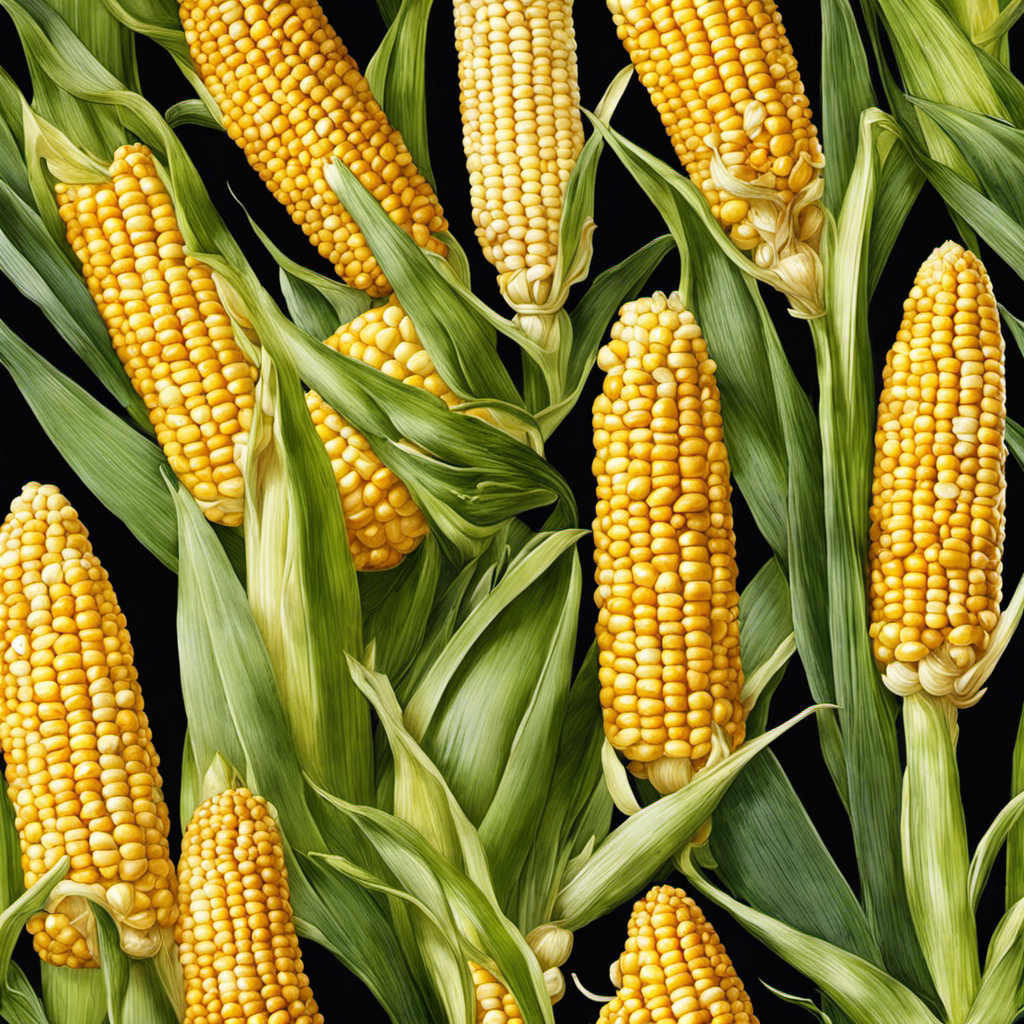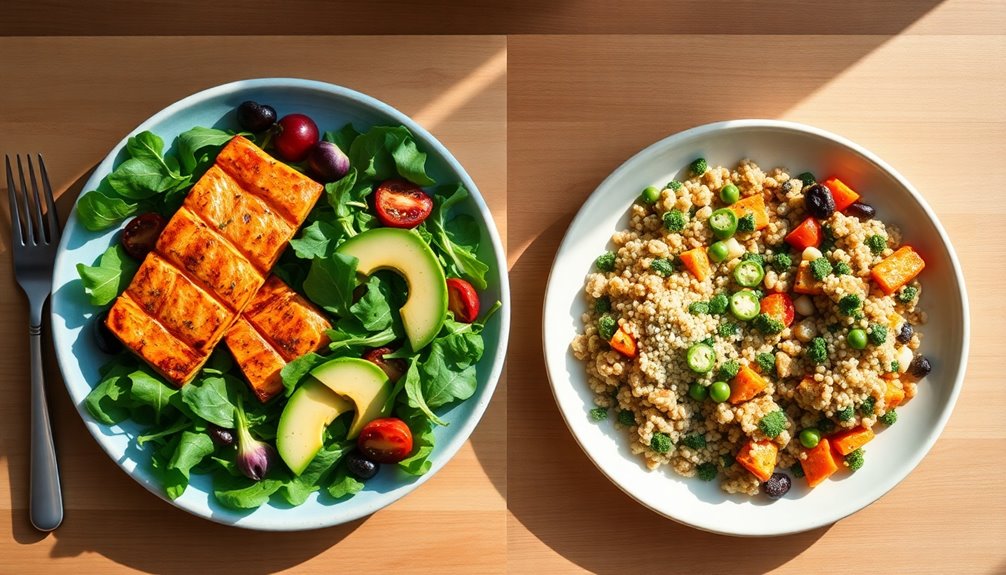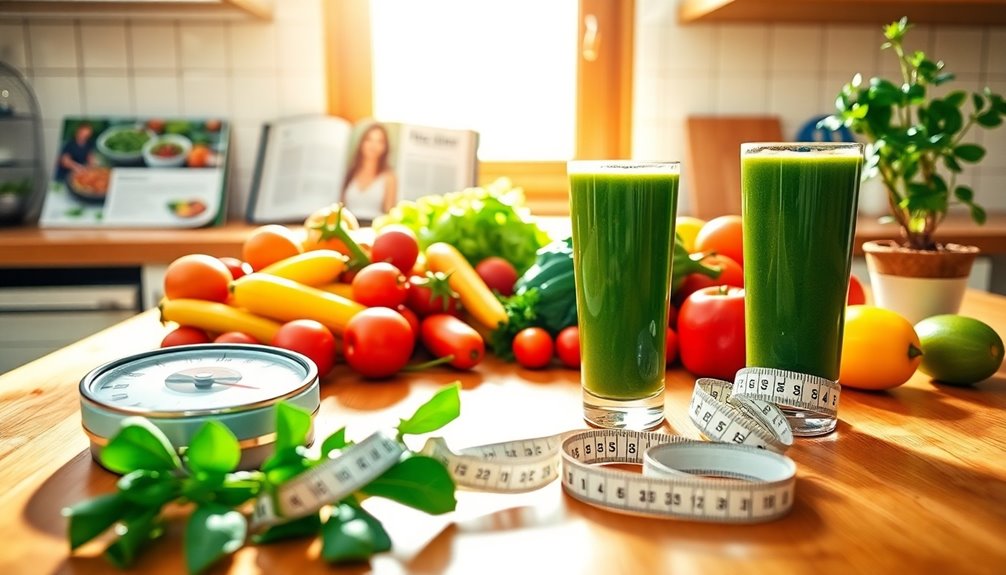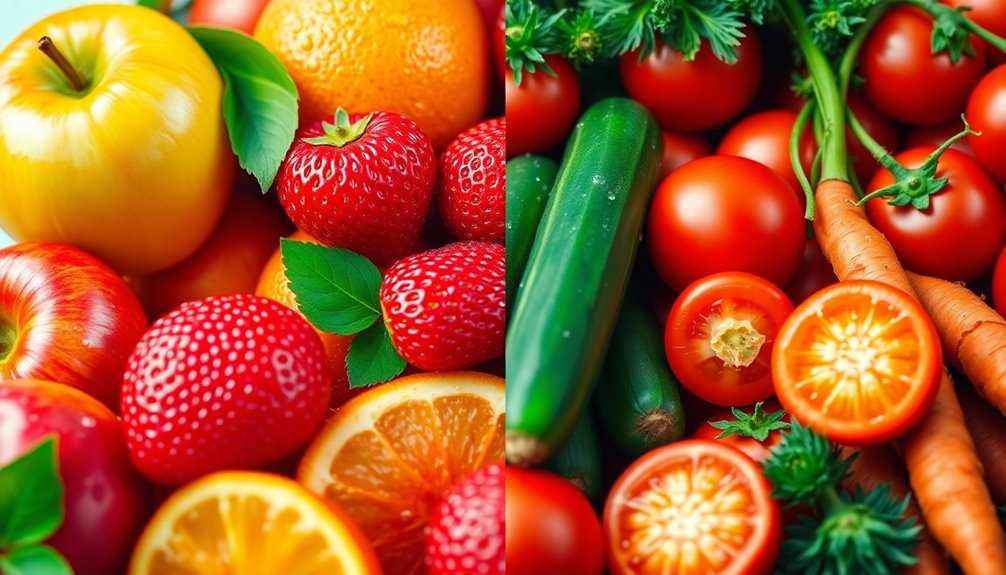I enjoy eating a tasty ear of corn on the cob with creamy butter. Ever thought about how many calories you’re consuming with each delicious bite?
In this article, I will explore the caloric content of corn on the cob and the impact of butter on its nutritional value. We’ll also discuss factors that affect calorie count, compare buttered and plain corn, and delve into the nutritional benefits of this summertime favorite.
Plus, I’ll share tips for reducing calories while still savoring that buttery goodness. And if you’re looking for alternatives to butter, we’ve got you covered.
Get ready to satisfy your curiosity and make informed choices about your corn on the cob indulgence.
Key Takeaways
- Corn on the cob with butter significantly increases the overall calorie count.
- Butter adds flavor and nutritional value to corn on the cob, containing essential vitamins and healthy fats.
- Cooking method, maturity of the corn, and kernel size can affect the calorie count in corn on the cob.
- Enjoying corn on the cob with a moderate amount of butter can still be a tasty and nutritious choice, but portion sizes should be mindful to avoid excessive calorie intake.
Caloric Content of Corn on the Cob
There’s no denying that corn on the cob with butter is a delicious treat, but have you ever wondered about its caloric content?
The caloric value of corn on the cob can vary depending on several factors. One of the main factors determining caloric value is the cooking method used.
Boiled corn on the cob has around 155 calories per ear, while grilled corn on the cob has slightly less at about 123 calories per ear.
Another important factor to consider is the amount of butter added. A pat of butter can add around 102 calories to the corn on the cob.
Butter’s Impact on Corn’s Caloric Value
To increase the caloric value of your corn on the cob, you can add butter. Butter not only adds flavor but also contributes to the nutritional value of your corn.
Butter is a good source of essential vitamins such as vitamin A, vitamin E, and vitamin K. These vitamins are important for maintaining healthy skin and promoting proper growth and development. Additionally, butter contains healthy fats, which are important for brain function and energy production.
Adding butter to your corn on the cob can also enhance the taste and make it more enjoyable to eat. The richness and creaminess of butter complement the natural sweetness of corn, creating a delicious and satisfying combination.
Factors Affecting Calorie Count in Corn on the Cob
Factors like cooking method, maturity of the corn, and kernel size can affect the calorie count in corn on the cob.
When it comes to the taste of corn on the cob, butter plays a significant role. Adding butter to corn enhances its flavor, making it more delicious and enjoyable. However, it is important to note that butter also increases the calorie content of corn.
While corn on the cob itself is a nutritious choice, providing essential nutrients like fiber and vitamin C, the addition of butter can significantly increase the calorie count. One tablespoon of butter contains around 100 calories, so it’s important to be mindful of portion sizes when adding butter to your corn on the cob.
Enjoying corn on the cob with a moderate amount of butter can still be a tasty and nutritious choice.
Comparing Calorie Content of Corn on the Cob With and Without Butter
When it comes to enjoying corn on the cob, many people love to slather it with butter. However, it’s important to understand the calorie contribution that butter adds to this beloved dish.
In addition to the calories, there are also nutritional differences between versions with and without butter, which may impact our overall health. Therefore, it’s worth exploring the health implications of butter when consuming corn on the cob.
Butter’s Calorie Contribution
You should be aware that butter can significantly increase the calorie content of your corn on the cob. Here are a few key points to consider regarding butter’s impact on the calorie content of this popular side dish:
-
Butter’s fat content: Butter is high in fat, which contributes to its rich and creamy texture. Just one tablespoon of butter contains around 100 calories and 11 grams of fat.
-
Impact on cholesterol levels: Butter is also high in saturated fat, which can raise levels of LDL cholesterol, commonly referred to as ‘bad’ cholesterol. Consuming too much saturated fat can increase the risk of heart disease.
-
Nutritional difference between versions: When comparing the calorie content of corn on the cob with and without butter, it’s important to note that adding butter significantly increases the overall calorie count. Without butter, corn on the cob is a low-calorie and nutritious option. However, if you choose to add butter, it’s important to be mindful of portion sizes to avoid excessive calorie intake.
Considering the impact of butter on both calorie content and cholesterol levels, it’s important to make informed choices when enjoying corn on the cob.
Nutritional Difference Between Versions
Adding butter significantly increases the overall calorie count and alters the nutritional value of corn on the cob. While butter adds flavor and richness to this favorite summer treat, it is important to consider the health implications of consuming excessive amounts. Fortunately, there are butter alternatives available that can provide a similar taste without the negative effects on health.
To better understand the nutritional differences, let’s compare the nutritional values of corn on the cob with and without butter:
| Nutrient | Corn on the Cob | Corn on the Cob with Butter |
|---|---|---|
| Calories | 123 | 248 |
| Fat | 1g | 14g |
| Carbs | 27g | 27g |
| Protein | 4g | 3g |
As you can see, adding butter more than doubles the calorie content and significantly increases the fat content. Excessive butter consumption can lead to health risks such as weight gain, high cholesterol, and increased risk of heart disease. Considering healthier butter alternatives, like olive oil or avocado spread, can help reduce calorie intake and mitigate these risks.
Health Implications of Butter
Now that we’ve discussed the nutritional differences between versions of corn on the cob, let’s talk about the health implications of butter.
It’s important to consider the health risks associated with consuming butter, especially in relation to dietary guidelines.
-
High in saturated fat: Butter is primarily composed of saturated fat, which has been linked to increased cholesterol levels and an increased risk of heart disease.
-
Caloric density: Butter is a calorie-dense food, meaning it contains a high number of calories in a small serving. Consuming too many calories can lead to weight gain and obesity, which are associated with various health problems, including diabetes and cardiovascular disease.
-
Alternative options: To mitigate the health risks associated with butter, consider using healthier alternatives, such as olive oil or avocado spread, which contain healthier fats and may have additional health benefits.
When it comes to butter, moderation is key. It’s important to follow dietary guidelines that recommend limiting saturated fat intake and opting for healthier alternatives for overall health and well-being.
Exploring the Nutritional Benefits of Corn on the Cob
When it comes to the health benefits of corn, there’s more than meets the eye.
Not only is corn delicious, but it also packs a punch in terms of nutritional value.
From providing essential vitamins and minerals to aiding digestion and promoting heart health, corn is a versatile and nutritious addition to any diet.
Health Benefits of Corn
You’ll be pleased to know that corn on the cob is not only delicious, but it also offers several health benefits. Here are three reasons why incorporating corn into your diet can be good for you:
-
Nutrient-rich: Corn is packed with essential vitamins and minerals such as vitamin C, thiamin, and folate. These nutrients play a vital role in supporting a healthy immune system, promoting brain function, and aiding in cell growth and development.
-
Digestive health: Corn contains a significant amount of dietary fiber, which helps regulate digestion and prevent constipation. It also promotes the growth of healthy gut bacteria, contributing to a healthy digestive system.
-
Antioxidant properties: Corn is rich in antioxidants, such as lutein and zeaxanthin, which are known to protect the eyes from harmful ultraviolet rays and reduce the risk of developing age-related macular degeneration.
In addition to its health benefits, corn is also a versatile ingredient that can be enjoyed in various ways.
Now, let’s explore the nutritional value of corn.
Nutritional Value of Corn
Corn is a versatile ingredient that provides a range of essential nutrients for a healthy diet. It is not only delicious but also packed with nutritional benefits. Corn is a good source of dietary fiber, which aids in digestion and helps prevent constipation. It is also rich in vitamins such as vitamin C, which boosts the immune system, and vitamin B6, which supports brain function. Additionally, corn contains minerals like magnesium and potassium, which are important for maintaining healthy blood pressure levels. Furthermore, corn is a great source of antioxidants, such as lutein and zeaxanthin, which promote eye health. Overall, incorporating corn into your diet can provide numerous health benefits and contribute to a well-rounded and nutritious meal.
| Nutrient | Amount per 100g |
|---|---|
| Calories | 96 |
| Carbohydrates | 21g |
| Protein | 3.4g |
| Fat | 1.5g |
Tips for Reducing Caloric Intake While Enjoying Corn on the Cob With Butter
One way to reduce caloric intake while enjoying corn on the cob with butter is by opting for a lighter butter alternative. By choosing a healthier option, you can still add flavor to your corn without the extra calories.
Here are some alternative toppings that you can try:
-
Olive oil: Drizzling some olive oil over your corn can add a delicious flavor and is a healthier option compared to butter. It contains heart-healthy monounsaturated fats and is lower in saturated fats.
-
Herbs and spices: Sprinkling some herbs and spices like garlic powder, paprika, or chili powder can enhance the taste of your corn without adding any extra calories. These options are also rich in antioxidants and can provide various health benefits.
-
Lemon juice: Squeezing some fresh lemon juice over your corn can give it a tangy and refreshing taste. It adds a burst of flavor without the need for butter or additional calories.
Other Tasty Alternatives to Butter for Corn on the Cob
If you want to try something different on your corn, there are several delicious alternatives to butter that you can experiment with. Not only do these alternatives provide different flavor variations, but they can also be healthier options. Here are three tasty alternatives to butter for corn on the cob:
| Alternative | Flavor Variation |
|---|---|
| Olive oil | Adds a rich, fruity taste |
| Garlic butter | Infuses the corn with a savory garlic flavor |
| Parmesan cheese | Gives the corn a cheesy and salty kick |
Using olive oil as a substitute for butter can add a unique and fruity taste to your corn. Garlic butter, made by mixing melted butter with minced garlic, provides a savory twist. And for those who love cheese, sprinkling some grated Parmesan cheese on your corn will give it a deliciously cheesy and salty flavor. These alternatives can be a great way to switch up your corn on the cob and add a burst of flavor to your meal.
Frequently Asked Questions
How Many Calories Are in a Serving of Corn on the Cob Without Butter?
A serving of corn on the cob without butter contains approximately [insert number] calories. It’s important to be mindful of portion sizes when considering the calorie count of this delicious summer treat.
Can I Add Other Seasonings or Condiments to Corn on the Cob Without Significantly Increasing the Calorie Count?
Adding different seasonings or condiments to corn on the cob can enhance its flavor without significantly increasing the calorie count. Some alternatives to butter include olive oil, herbs and spices, or a squeeze of lemon.
Are There Any Health Benefits Associated With Eating Corn on the Cob?
When it comes to health benefits, corn on the cob is a great choice. It is packed with essential nutrients like fiber, antioxidants, and vitamins. Plus, it’s a delicious and satisfying way to enjoy a nutritious snack.
How Can I Reduce the Calorie Intake When Enjoying Corn on the Cob With Butter?
To reduce calorie intake while enjoying corn on the cob with butter, opt for healthier options like using low-fat butter or replacing it with a sprinkle of herbs. These choices can help you enjoy your favorite treat without compromising your health goals.
What Are Some Tasty Alternatives to Butter That Can Be Used on Corn on the Cob?
Tasty alternatives to butter for corn on the cob include olive oil, garlic and herb seasoning, or a squeeze of fresh lemon. These options add flavor without the added calories. Plus, they offer health benefits like antioxidants and vitamin C.
Conclusion
After exploring the caloric content of corn on the cob with butter, it’s clear that this delicious treat can be enjoyed without guilt. With the right portion size and moderation, you can savor the sweet, buttery goodness while still maintaining a healthy lifestyle.
Remember, the nutritional benefits of corn on the cob, such as fiber and vitamins, make it a worthy addition to your diet. So go ahead, indulge in this delectable summer staple and let the flavors transport you to a sunny day at the beach.










